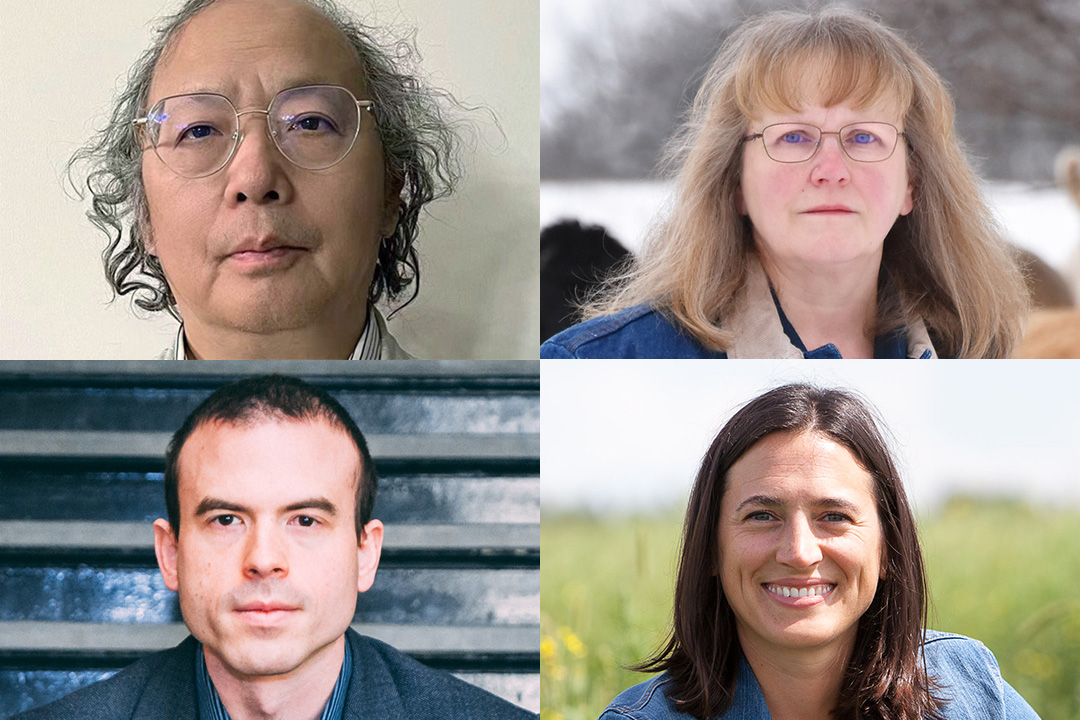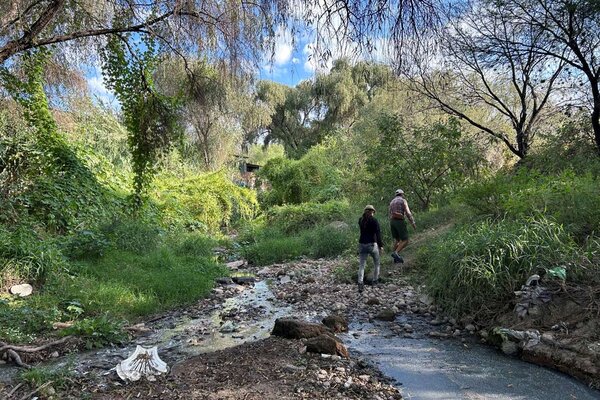
USask announces top research award winners for 2023
USask has announced the recipients of Distinguished Researcher and New Researcher awards for the year
By Research Profile and Impact
Recipients of the University of Saskatchewan’s (USask) top honour of Distinguished Researchers for 2023 are Dr. Wen Jun (Chris) Zhang (PhD), and Dr. Cheryl Waldner (DVM, PhD), internationally recognized experts in their fields who have contributed their talents to USask for more than two decades.
USask has also recognized Dr. Ben Hoy (PhD), and Dr. Kate Congreves (PhD) with its New Researcher Awards for this year. USask’s four major annual research awards—awarded in conjunction with USask convocation—honour significant contributions to knowledge or artistic creativity by members of the university’s research community.
Dr. Ben Hoy: Vast datasets lead to compelling historical tales

“I am absolutely surprised and thrilled with the New Researcher Award. Even getting nominated for something like this is a huge accomplishment. It’s not something I ever expected, because there are so many good researchers at USask, even in my own department,” said Hoy, associate professor of history in the College of Arts and Science.
In nominating Hoy for the award, Dr. Valerie Korinek (PhD) and Dr. Jim Clifford (PhD) of the history department wrote that, for his career stage, Hoy is the most accomplished junior historian the department has hired in the past 25 years, based on his research and teaching achievements, institutional and national awards, external research grants, and producing highly qualified personnel.
Hoy attributes the recognition to the huge success of his multi-award winning first book, A Line of Blood and Dirt: Creating the Canada-United States Border Across Indigenous Lands. Hoy is most proud about the breadth of his book, which covers 50 years of history across more than a dozen ethnic groups and communities including Indigenous peoples, Chinese and Japanese immigrants, and African Americans, across the better part of the continent.
“I’m most happy that it tells that story in a way that doesn’t require a lot of specialized knowledge to understand,” he said. “The thing I strive most for as a scholar is taking a complex topic and making it accessible to people so that someone on the street can readily learn something about their past.”
The book, which won the prestigious Governor General’s History Award for Scholarly Research in 2022, is based on years of painstaking archival, oral, and quantitative research across Canada and in the U.S., and taps a vast dataset Hoy has compiled in collaboration with more than 80 people—many students and some faculty.
“It’s the part of the award that makes me the happiest. The best work that we do is done in teams. The success of the book and the awards it won is a testament to them as it is to me.
Hoy has made the vast dataset available free online to other researchers. His goal is to keep adding to the historical dataset over his career by including such things as prison, medical and agricultural records, which eventually can be overlayed to create more complex understanding of history.
To read more about all award recipients visit the USask news site.
Together, we will undertake the research the world needs. We invite you to join by supporting critical research at USask.


